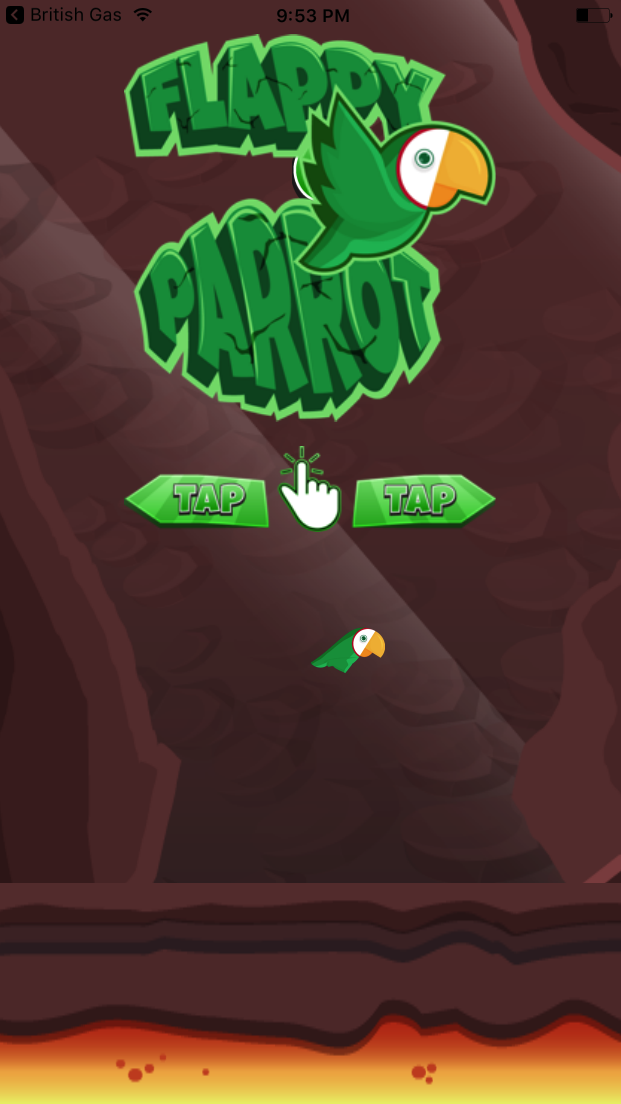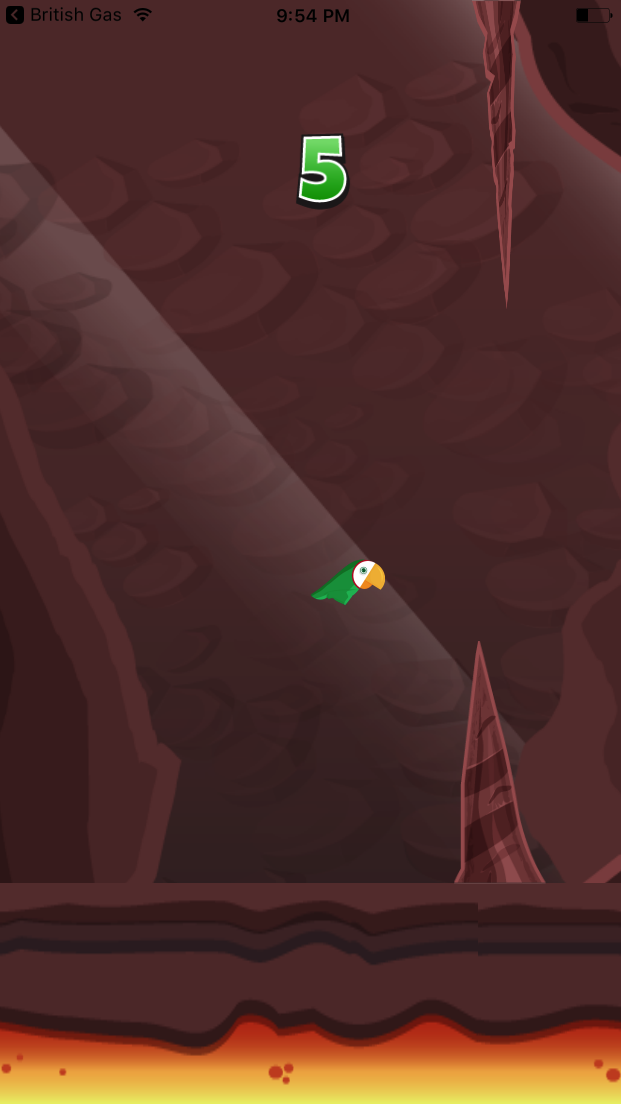The game we will build in this chapter has simple mechanics:
- The goal is to help a parrot fly between rocks in a cave
- Tapping the screen will result in the parrot flying higher
- Gravity will pull the parrot toward the ground
- Any collision between the parrot and the rocks or the ground will result in the end of the game
- The score will be increased every time the parrot flies through a group of rocks
This kind of game is very well suited to being built with React Native, as it doesn't really need complex animations or physics capabilities. All we need to be sure of is that we move every sprite (graphics component) on the screen at the correct time to create the feeling of continuous animation.
Let's take a look at the initial screen for our game:

This screen presents the logo and instructions about how to get the game started. In this case, a simple tap will start up the game mechanics causing the parrot to fly forward and up on every tap.

The player must help our parrot to fly through the...



